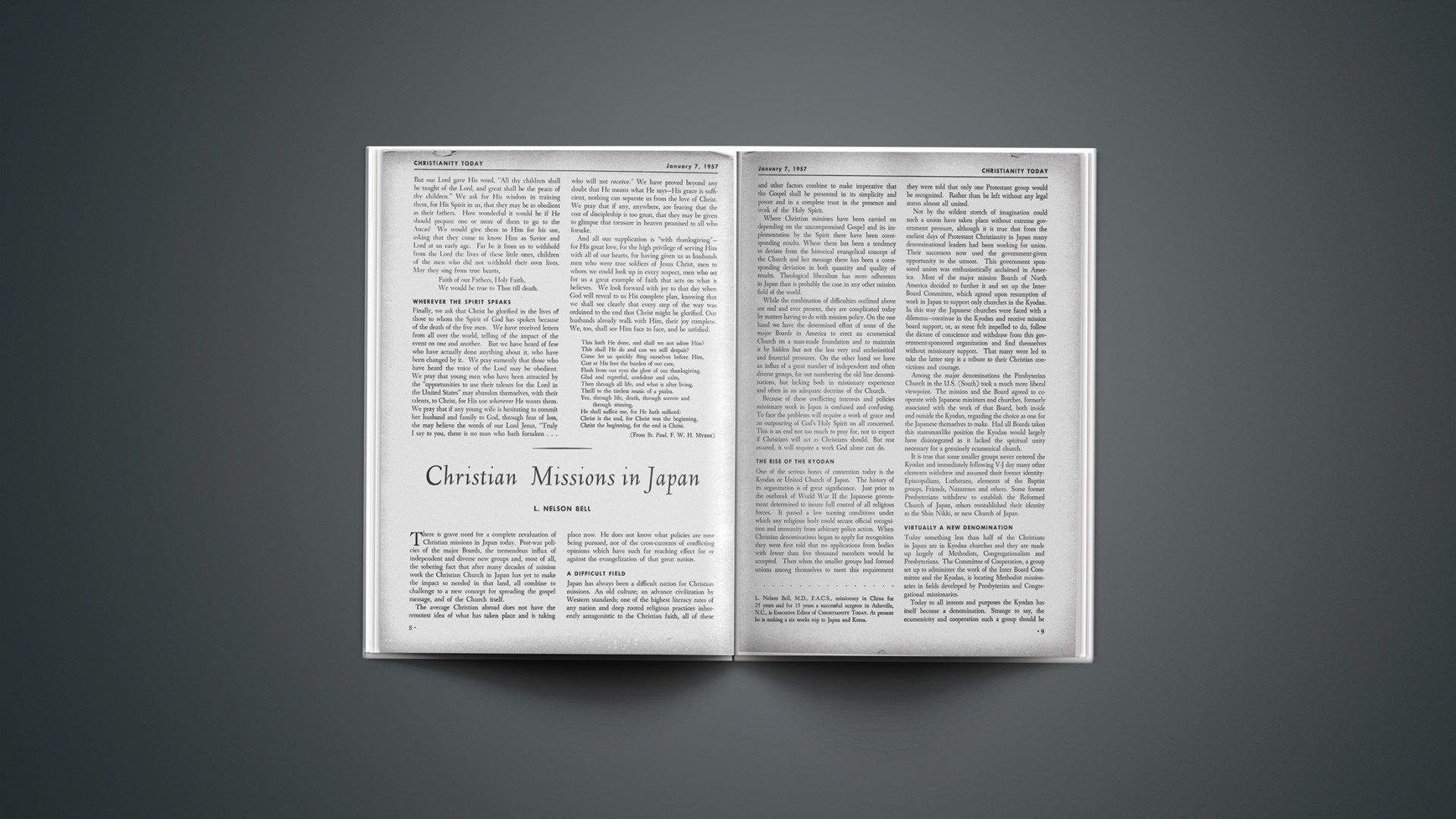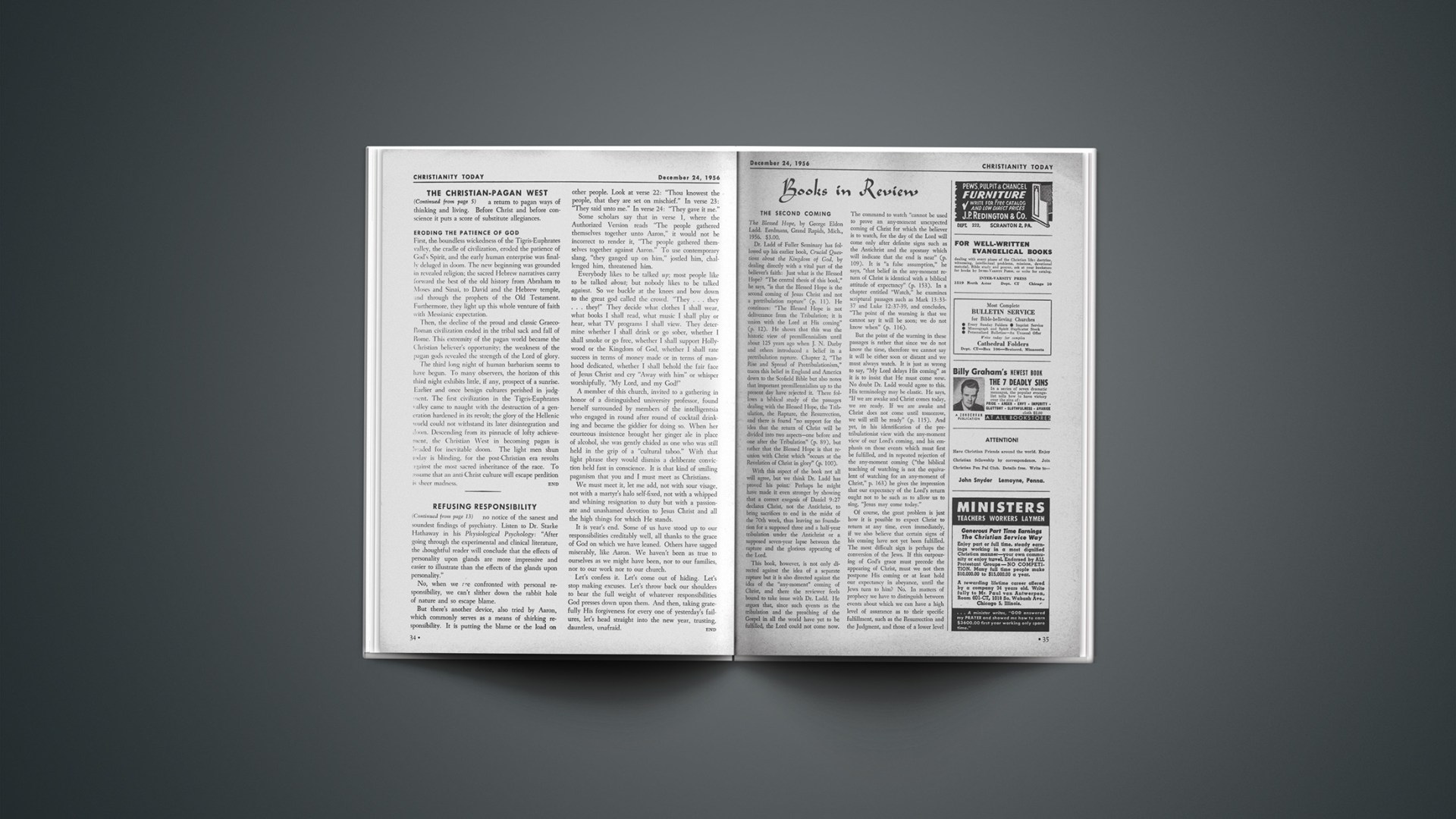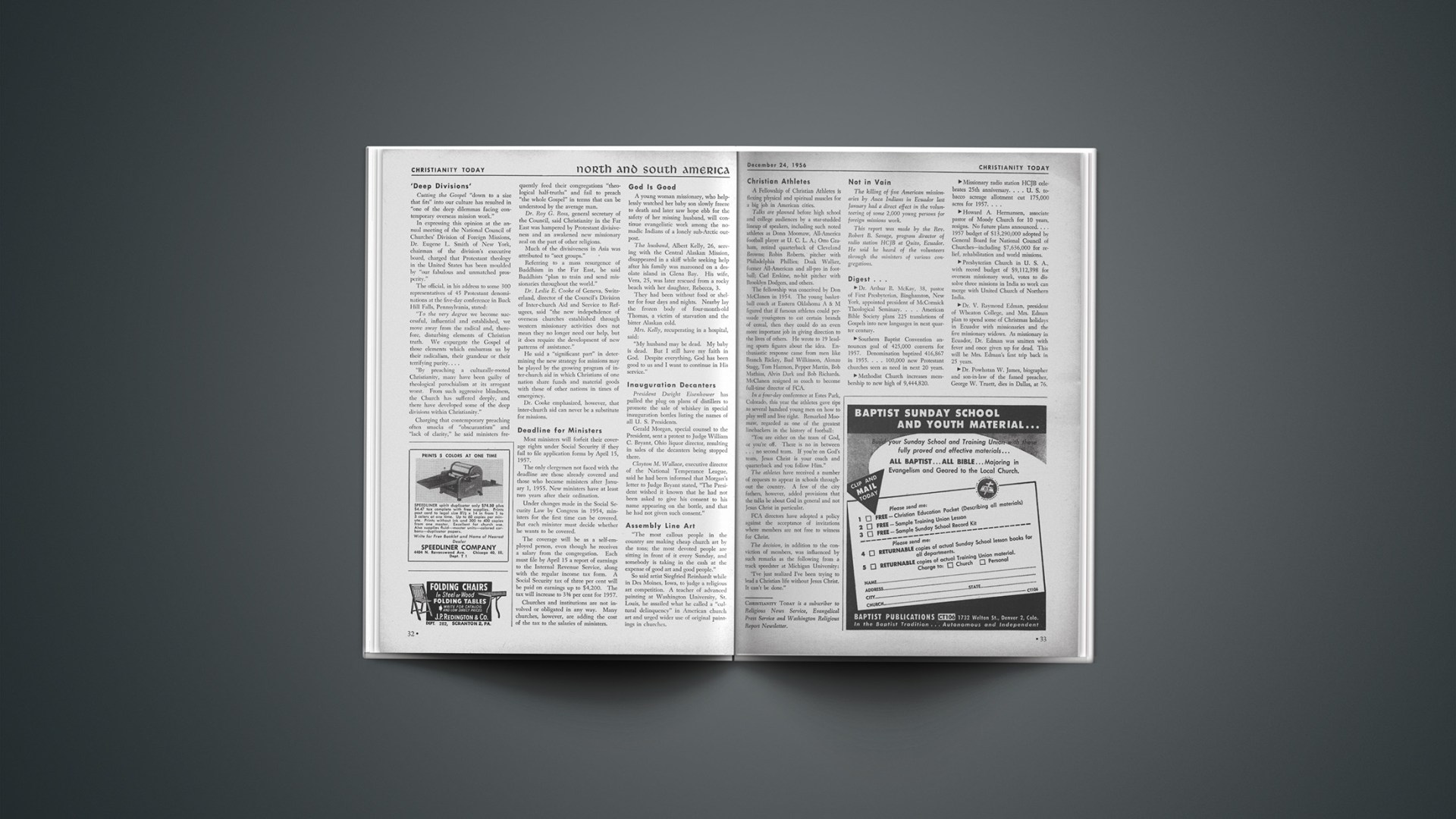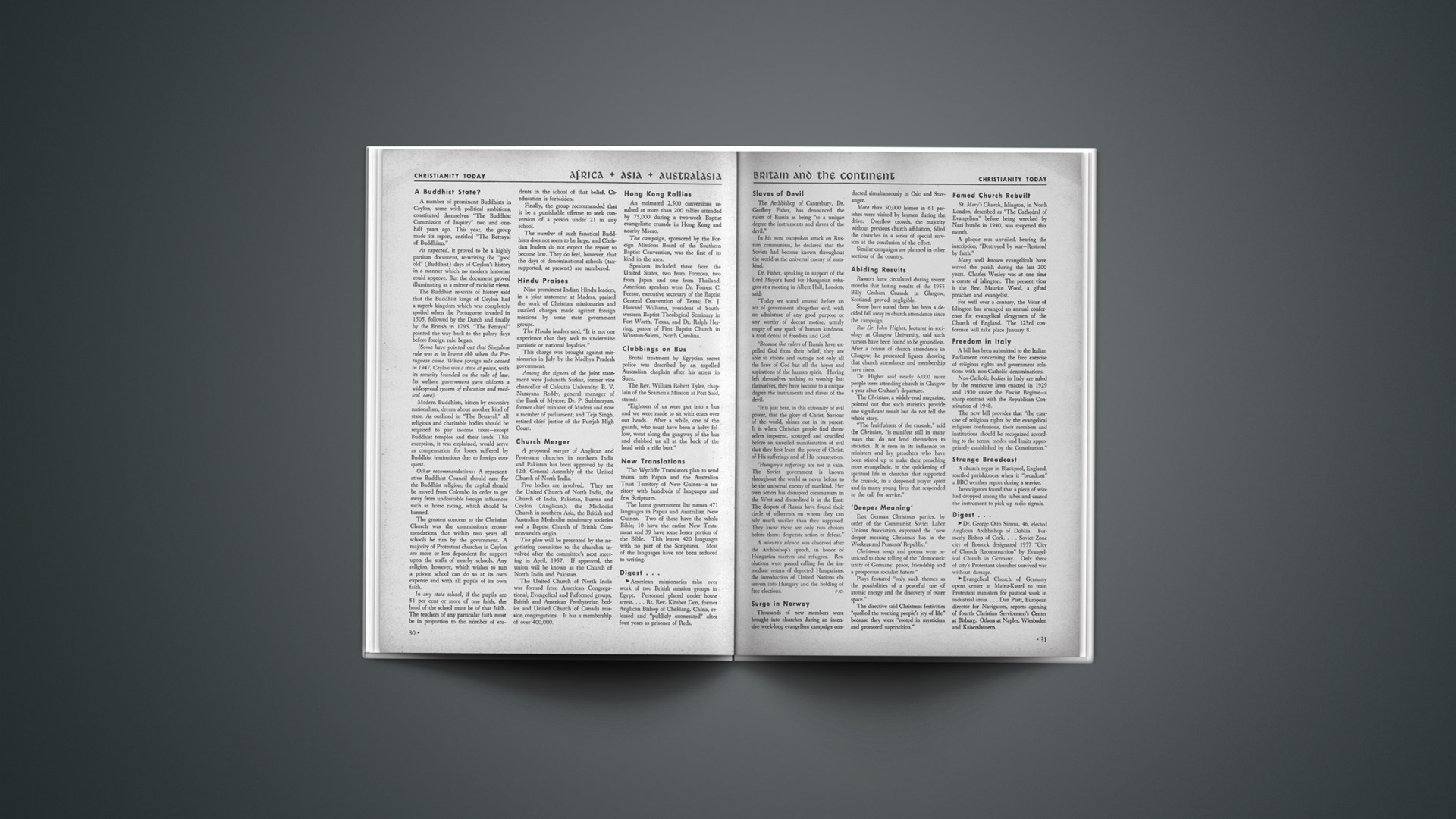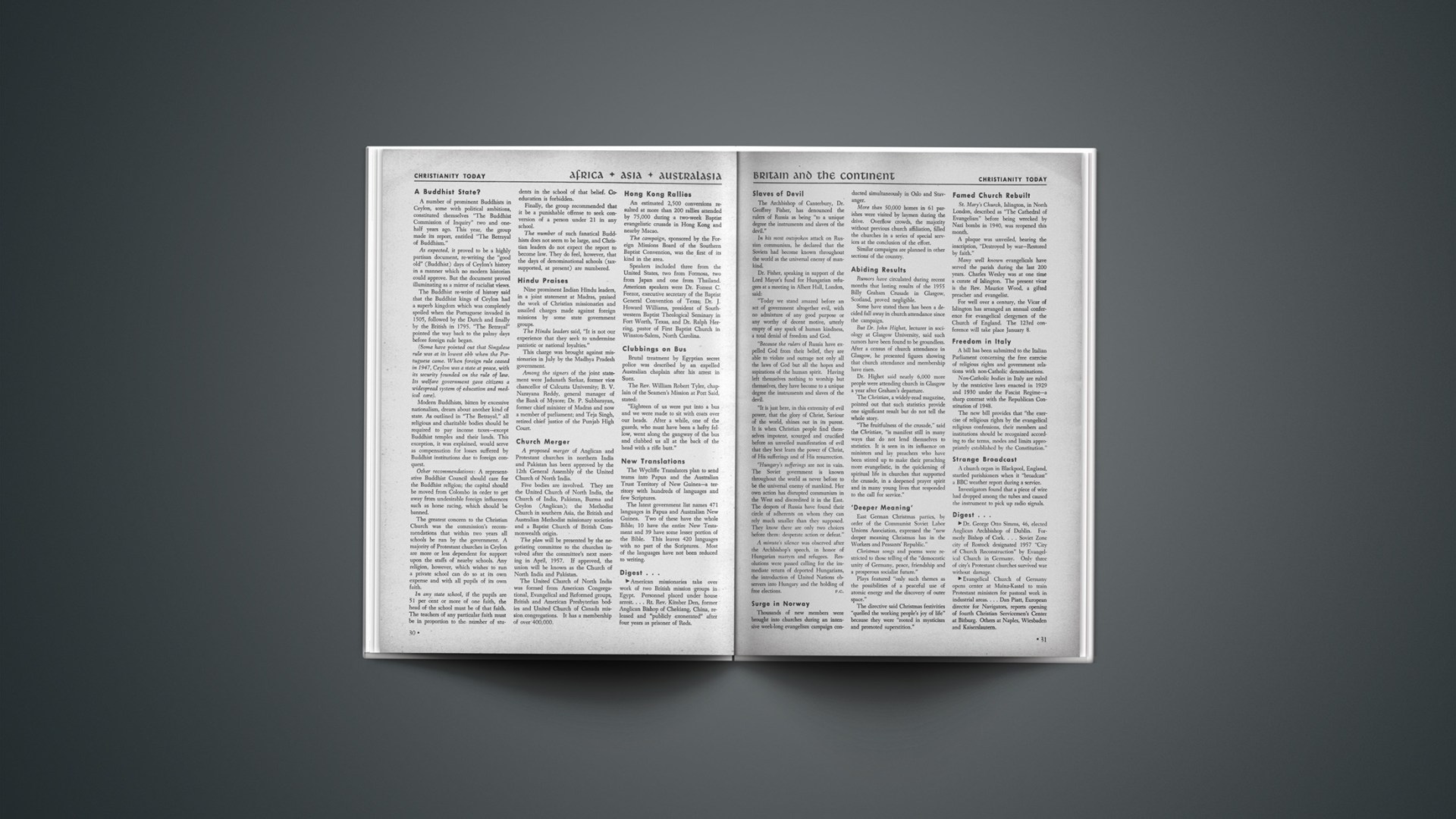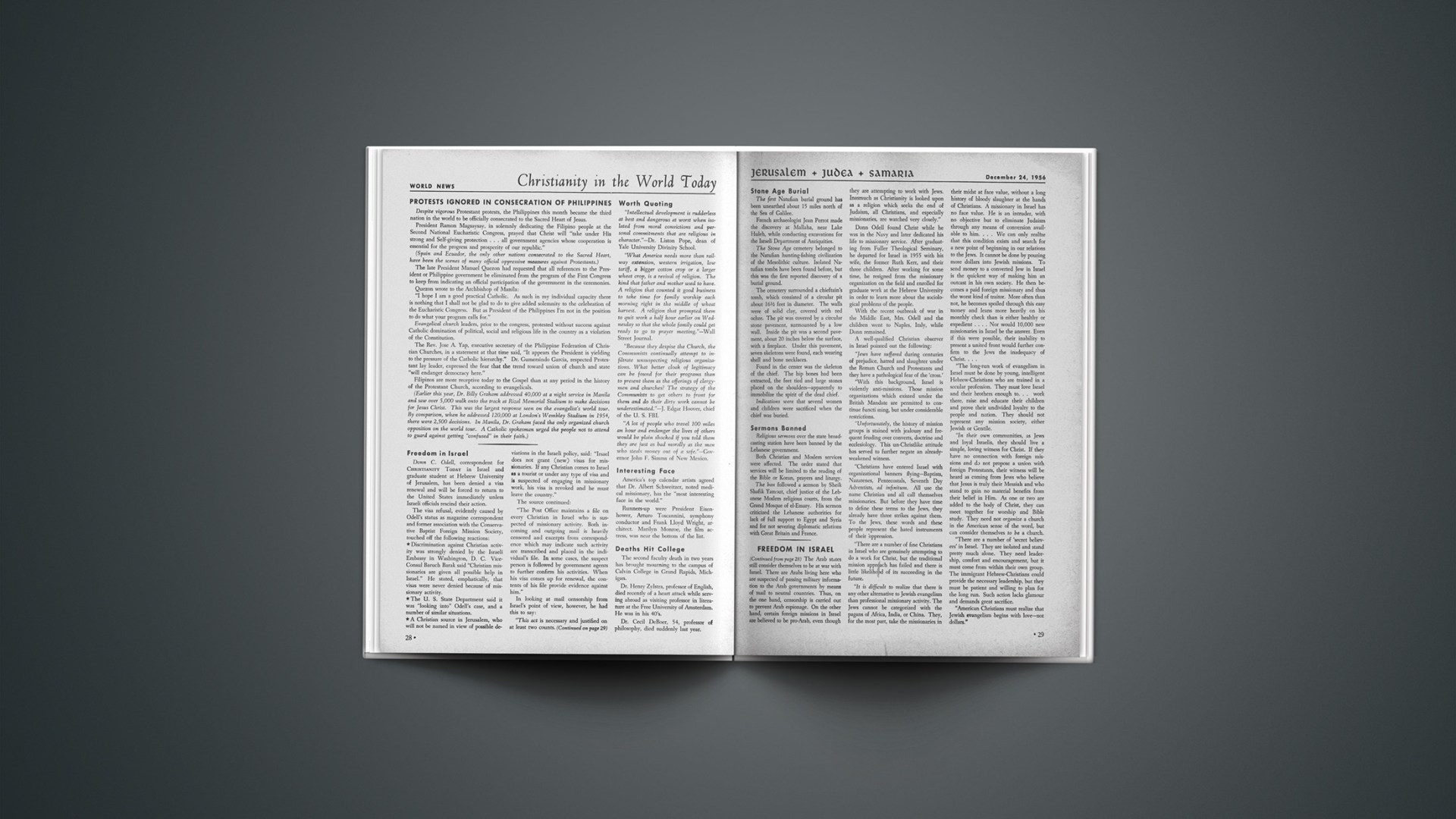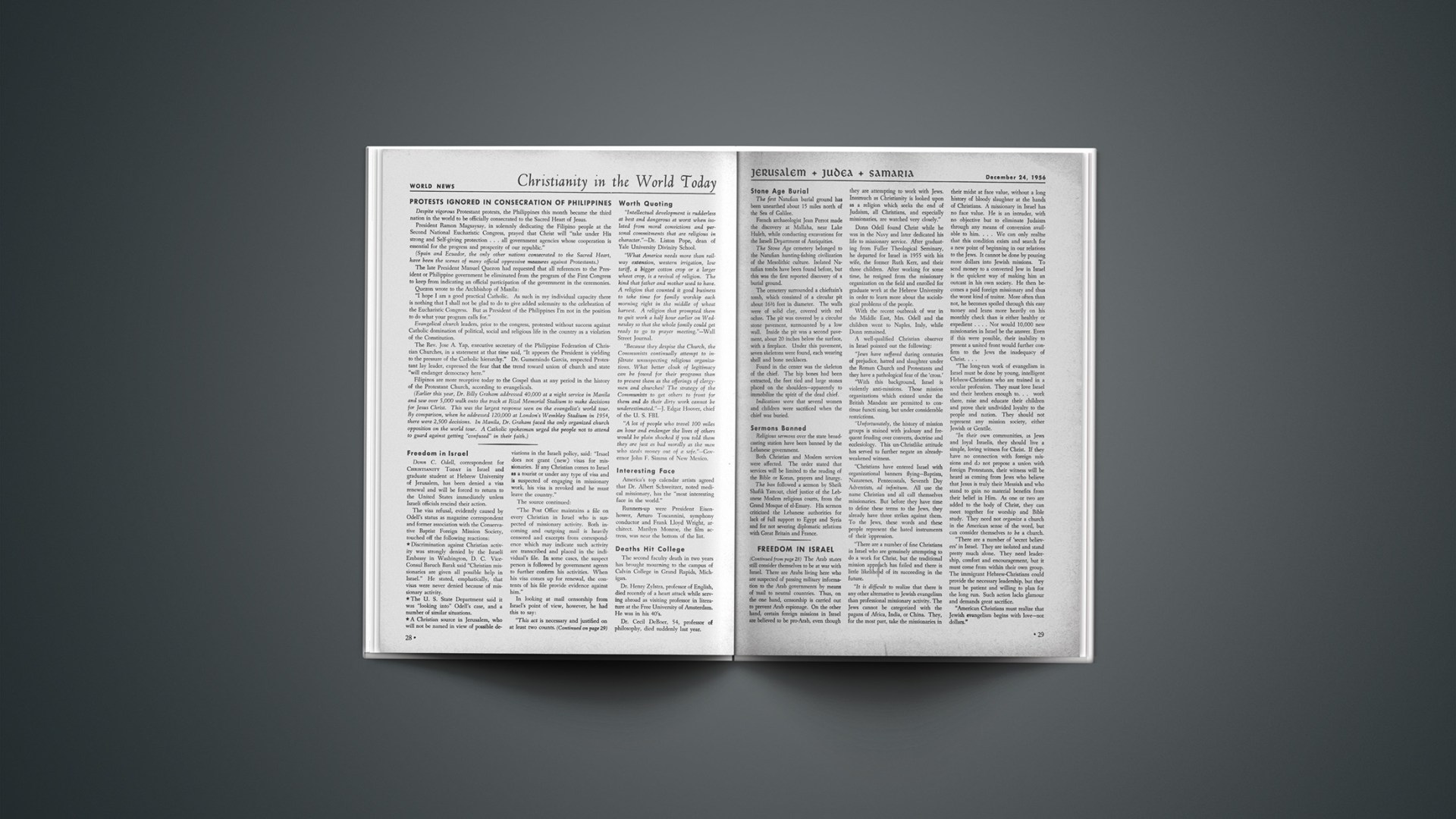The year 1948 marked the beginning of a new epoch in the American history of the Roman Catholic Church and the beginning of a new epoch in American history itself. In November of that year the leaders of this powerful church undertook a drastic reorientation of their attitude toward the United States government. It was a change not of conviction but of strategy, not of direction but of pace; yet the new strategy and the new pace were so striking as to constitute in themselves a major change. The statement of the Bishops issued at that time will repay thoughtful reading by every American. These men serve notice that the vast power of their organization will henceforth be devoted to destroying the principle of Church-State separation.
When the Bishops sound the call to action, their language is clear. They say plainly that “Separation of Church and State has become the shibboleth of doctrinaire secularism.” They pledge themselves to “work peacefully, patiently and perseveringly” for its destruction. Thus, with a bold announcement supported by the cleverest of propaganda, this powerful church has set out to destroy the free position of the American churches.
Then And Now
This change in Roman Catholic strategy is expressed in the church’s attitude toward education. During much of the nineteenth century, its hierarchy was concerned to eliminate from the public schools every reference to God, the Bible and religion and to make the schools strictly secular institutions. Roman Catholics brought more than one hundred cases before the courts to achieve these objectives. I cite here but one of the hundred—that of People ex. rel. Ring v. Board of Education in Illinois. In this case Roman Catholics sought to eliminate Bible reading and devotional exercises from the public-school program. The court agreed with their contention that these practices did violate Church-State separation as expressed in the Constitution and ordered them discontinued.
Roman Catholics undertook to drive religion out of the schools not because they were atheistic or secularistic people, but because they were not powerful enough to determine the kind of religion to be taught. They preferred no religious teaching at all if they could not have Roman Catholic dogma. The provincial council of the Roman Catholic Church in Baltimore, 1840, imposed on priests the responsibility of seeing to it that Catholic children attending public schools did not participate in any religious exercises there. They were also to use their influence to prevent any such practices in the public schools.
The “secular public school” was in substantial part the achievement of the Roman Catholic Church. Today, however, this church has about-faced. Today it denounces the secular public school as “godless” and argues loudly for the return of religion to education. Today movements for the teaching of “moral and spiritual values” in the public schools, like the recent one in New York City, find the hierarchy in hearty endorsement. The change of front is due to one simple fact—the Roman hierarchy now feels strong enough to permeate any public-school moral and spiritual teaching with its own dogma, or to secure public funds for its own private, sectarian schools.
Toward A New Era
The 1948 pronouncement of the Roman Catholic Bishops pointed the way to a new era in American Church-State relations. As far as Rome was concerned, this pronouncement marked the end of the line for Church-State separation. The principle that had received grudging recognition from this group as long as it was a weak, ineffectual minority was now to be replaced by one more in keeping with the main line of Romanist tradition.
The resources of this powerful church were quickly marshaled for action. The Roman Church claims a membership of 33 million in the United States, which has become in the hands of the hierarchy a gigantic battering ram to breach the wall of separation. The adults in this membership comprise the “Catholic vote” of which we hear so much. There are, comparatively, not many Catholics holding high public office. This is actually a source of strength to the hierarchy since it is able to keep in perpetual intimidation the Protestant officeholders who fear nothing more than that the “Catholic vote” might be turned against them.
This political power is skillfully wielded to secure preferential treatment for the Roman Church. A good example is the nearly $1 million voted by the Eighty-fourth Congress to refurbish the Pope’s summer palace. The payment was for damages allegedly inflicted by American bombs upon a neutral power in World War II. The summer palace was not located in Vatican City, however, and the damage, according to impartial observers, was negligible. This subsidy to the Pope went through as a high-level, nonpartisan item. No one would have thought of voting against it. To do so might have offended the “Catholic vote.”
A far more serious matter was House Bill 6568, which was smuggled through the Senate in the confusion before adjournment of the Eighty-fourth Congress. This provides another $8 million plus for Roman Catholic activities in the Philippines. After the war, American lobbyists visited the Philippines and alerted Roman Catholic officials to the rich potential in “war services” and “war damages.” The church collected for services allegedly suffered to its installations. The Bishop of Zamboanga, the Archbishop of Jaro, the Daughters of Charity of St. Vincent de Paul and the Knights of Columbus were among the Roman Catholic groups receiving generous grants. How many millions were paid is difficult for an outsider to determine.
The above mentioned act merely amended the law so that Archbishop Santos of Manila, whose “claims” had been rejected by the Commission, could get his millions along with the millions that had gone to his colleagues. Although the sum was “only $8 million,” it should be recalled that the Archbishop’s claims originally ran to $30 million. All of these claims will no doubt be revived, while others from the innumerable church orders will be added. All will be paid in time. Oh yes, there is a chance that the Protestants may qualify for about $30,000 under H. R. 6586.
The public schools of the Philippines received not one cent. Nor will they, because they lack a high-powered lobby and the unveiled threat of reprisal at the polls.
Sectarian Subsidies Unlimited
There have been other government subsidies to the Roman Church. The Hill-Burton Act, which authorized Federal grants to sectarian hospitals, has been a bonanza to this church. Under it the Roman Catholics have collected $112,039,000 for their institutions. Protestant institutions have received $23,118,000. Even the disparity of these figures does not tell the story. Close observers have noted the large proportion of the grants that have gone to Roman Catholic hospitals in the South. In Alabama alone, for example, this church has obtained $6 million for its hospitals. Baptist churches with a total adult membership about equal to the Roman Catholic have a conscientious objection to taking Federal funds. Only a pittance, therefore, has gone to this group. What is worse, businessmen have begun to refuse to contribute to Baptist hospital campaigns, asking, “Why don’t you get your money from the government the way the Catholics do?”
The Roman Church has found the Hill-Burton Act a marvelous means for penetrating the hitherto impervious Protestantism of the South. Handsome healing centers built with Federal funds serve as a strong means for the propagation of this faith.
The campaign to shift the cost of Roman Catholic sectarian schools to the American taxpayer bids fair to be as successful as the hospital program. The campaign began easily as fringe benefits were sought from the government—bus transportation, textbooks, health benefits, lunches and the like. More recently, as for example in the Bishop’s statement issued in November, 1955, there is insistence upon the “full right to be considered and dealt with as components of the American educational system.” This statement also claims for parochial-school pupils the same government aid that goes to public-school pupils.
A useful gimmick in softening the public for sectarian subsidies is the so-called “study” of education. Proposals for a “study” were slipped through the Connecticut legislature as a “noncontroversial” item. No sooner had the commission begun its work when there began a spate of press releases about how many children were in parochial schools, the proportion of the educational load being carried by the Roman Catholic Church, the “saving” thus effected to the taxpayer. Presently Roman Catholic leaders throughout the state joined in a well-directed chorus appealing for state subsidies. The demands were based on the commission’s “scientific study.”
During the past year the drive for tax support has developed yet a new twist. This is a demand that tuition payments to parochial schools be allowable income tax deductions. The fiftieth annual convention of the Knights of St. John meeting in Dayton, Ohio, and the Central Catholic Verein meeting in Wichita, Kansas, are among the many Roman Catholic groups that have appealed to Congress for this kind of “relief.” Thus a back-door assault on the public treasury keeps pace with the front-door demand.
In many communities where they are in the majority, Roman Catholics have simply taken over the public schools. They have staffed them with nuns and priests whose salaries, paid from state funds, go directly to their superior, without deductions. It took long and expensive litigations to clear up situations of this kind in Missouri, New Mexico and Kentucky. There are still numerous “trouble spots” all around the country. Last year in Indiana, for example, more than $2 million in tax funds went to “public schools” that were in effect parochial schools of the Roman Church. There are 152 garbed nuns teaching in the public schools of Kansas with their salaries going to their church.
A Major Decision
In simple justice it must be said that the Roman Catholic hierarchy is now within sight of its goal. Success has come even faster than its leaders dreamed. Many activities of this church are already receiving tax support. Hospitals, schools, orphanages and other “welfare programs” are in this category. Other activities receive sizable grants from community chests. The measure of this support is being constantly increased. The time is in sight when all the so-called “social service” activities of the Roman Church will be supported by tax funds collected by compulsion from citizens of all faiths.
The Protestants, if they are realistic, will see but two alternatives before them. One, they must accept the principle of government subsidies to churches—that is, the principle of plural establishment—and get into the scramble to get all they can for their own denomination. Or, two, they must stop kidding themselves with the false tolerance that plays into Rome’s hands, and battle to hold the line for Church-State separation.
The first of these alternatives—plural establishment—would have definite advantages over the “don’t look now” policy being presently followed by the Protestants. If the Protestants were to go all-out for government subsidies, they would probably be able to rectify the absurd inequities of the Hill-Burton grants. They must recognize, however, that in changing from the principle of voluntarism to the principle of official compulsion, they are taking a drastic step, which will have the most far-reaching consequences. Also, and this is a more practical matter, they are moving into competition with old hands at this business of obtaining political favors. It is a kind of competition that, because of their own predilections, the Protestants stand to lose.
Westerly, Rhode Island, is a tiny community that offers a good sample of the sort of thing we might expect under plural establishment. The Roman Catholics of Westerly, having developed their own schools to the point where certain public school buildings were no longer needed, proceeded to take them over for their own use. The town council voted them to the Roman Church at a purchase price of $1. The Methodists of Westerly were resentful as they saw these valuable properties falling to the Roman Catholics, one by one. They decided to get one for themselves. After working some wheels within wheels and getting help from Catholic citizens who believed in “fair play”—they were able to get one of the buildings for $1. Since their success, however, there has been a rash of such giveaways in Rhode Island. The recipient has been, in every instance, the Roman Catholic Church. Now that the principle has been accepted and “the Methodists are doing it too,” there is no restraint.
The worst feature of plural establishment, however, would be the extremity of its pluralism. Our culture would be hopelessly enclaved as 250 religious establishments or more threw themselves into the wild scramble for tax funds. The principal beneficiary would be the church that is prepared for an operation of this kind, a church that has, in fact, lived on state subsidies for many centuries.
The Alternative
The alternative is clear. Protestants must face this challenge frankly at the political level. As the Roman Church moves toward state financing and toward those favors which are the precursor of establishment, Protestants must stand in resolute opposition. They must do this in good humor and brotherliness, but with unbending firmness. The Roman Catholic propaganda that softens the nation for official favors must be dispassionately exposed. Protestants must recognize that they are not promoting secularism when they insist that the Roman Catholic Church shall raise its funds the way other churches do, or when they insist that there shall be no official favors or preferments for any church.
Roman Catholicism in the United States has come a long way in a century and a half. At first, as a feeble minority it accepted Church-State separation. The principle seemed best in the circumstances. Now, as a powerful minority—united in the midst of a divided majority—it calls for the end of Church-State separation. It intimidates Congress, censors and silences opposition, collects vast sums from the public treasury and drives toward official recognition and establishment. If the Protestants do not unite in determined opposition to this drive, another decade will see the end of Church-State separation here. We shall have, to all practical effect, a religious establishment in a country whose Constitution forbids it. That establishment will be pluralistic—or otherwise.
After attending Asbury College and Duke and Yale universities, the Rev. C. Stanley Lowell invested a year with the Methodist temperance movement and then accepted assignments to Methodist parishes for 20 years. Since April, 1956, he has devoted full time to Protestants and Other Americans United, an organization corrective of sectarian encroachments on the American policy of separation of Church and State.



